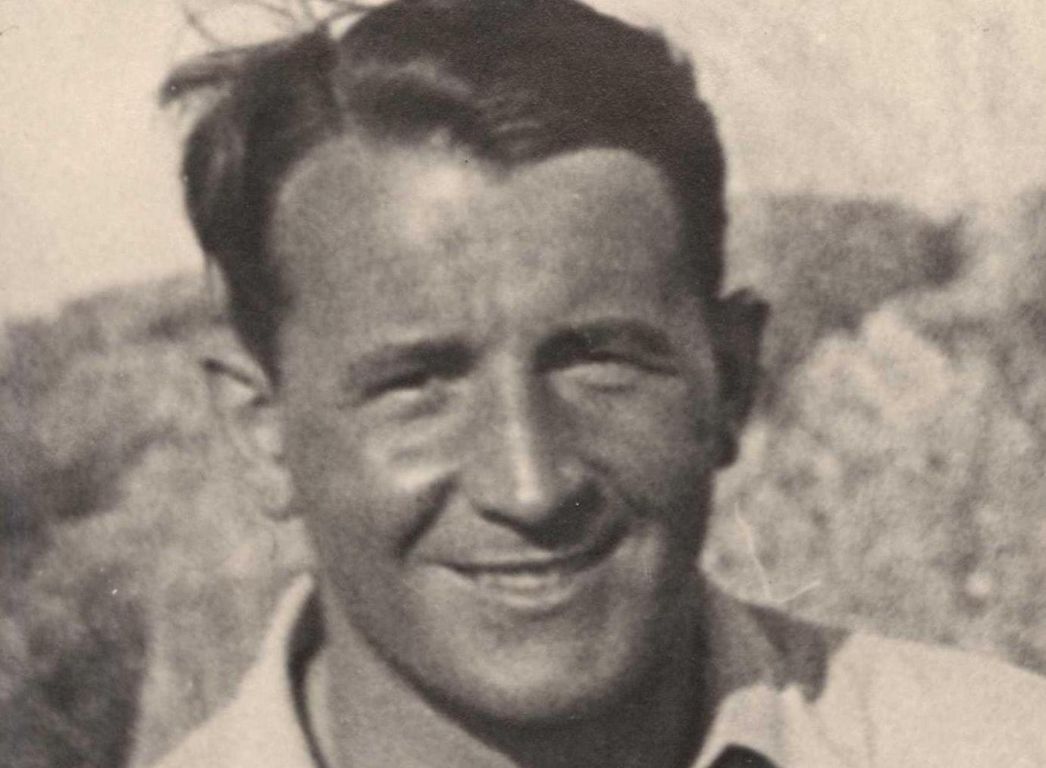Transcript
Franz Ehrlich “He thought he could not subject [his family] to the shame of being in the concentration camp and therefore wanted to commit suicide. … Since I couldn’t keep him from it, I convinced him that, in the interest of the inmates, he shouldn’t commit suicide but get himself shot by the SS. [In] September ’37, inmates were shot to death every day in Buchenwald ‘in the attempt to escape’ – within the sentry line, of course. I convinced Dr Grashey that his father, a doctor, would surely not believe he had tried to escape and would demand an autopsy of the corpse.”
Narrator The architect Franz Ehrlich had vivid memories of Rolf Grashey, even though their acquaintance lasted no more than a few days, if not hours. On 2 September 1937 they stood side by side in the lorry that fetched them from the station in Weimar. Their destination was the concentration camp on the Ettersberg. A few days later, Rolf Grashey was no longer alive. He was the first homosexual inmate to be murdered in Buchenwald.
Rolf Grashey came from a conservative Bavarian family of doctors; his father was a university professor and a well-known radiologist. Against the family’s will, Rolf embarked on a different career: he studied German philology and dramatics and in the early thirties wrote a doctoral thesis on the history of theatre in Munich. Languages and literature were his great love. He taught Slavistics and translated several works from Russian into German. The texts were published in the Simplicissimus magazine – as were his own poems.
Rolf Grashey received his first visit from the police in 1935. They searched his flat – supposedly for political material. In reality, it was his acquaintance with Richard Billinger, a writer, that had drawn the investigators’ attention to him. At the time, Billinger was standing trial for homosexuality.
Under pressure from the officials who interrogated him, Rolf Grashey also confessed to cultivating homosexual relationships. Although the trial ultimately ended with Billinger’s acquittal, Rolf Grashey was now on record, and his homosexuality known to the Gestapo.
The Nazis deliberately destroyed the homosexual culture, which had seen a heyday in the 1920s. Again and again, the police raided bars and cafés and made arrests. Section 175 of the criminal code, the law against so-called “sodomy”, was toughened. Already just petting and kissing could now lead to a conviction.
In 1937, the Gestapo carried out inquiries against the director of the Lindenau Museum in Altenburg in Thuringia. Every time his acquaintances were questioned, it led to new suspicions and new indictments of intellectuals and members of the cultural milieu.
Within this context, Rolf Grashey’s name turned up once again. A contact in Weimar was his undoing. He had made the acquaintance of a lance corporal there, who now revealed their encounter.
Rolf Grashey was arrested in Munich and in early September 1937 transported to the Buchenwald concentration camp. Just two days later, while performing forced labour, he was shot “in the attempt to escape” – as it was termed by the SS.
His father, however, actually did demand an autopsy. The result was unambiguous: the shot that had killed his son had been fired from close range. An escape attempt was thus ruled out. For a very brief period afterwards, the guard units were forbidden to shoot inmates within the sentry line.


